by Louise Trueheart, studio photos by Ryan Molnar // Apr. 28, 2023
Both of Cammisa Buerhaus’ hands were busy outfitting the puppet she was working on. The layers of stiff silk on its miniature skirt were “giving Issey Miyake,” we mused, as Colin Self joked with Buerhaus. They are old friends and collaborators on Self’s upcoming exhibition ‘The Lemniscatic Elliptic.’ Self’s motley crew of string-suspended characters—some from their personal archive and some crafted during their ongoing residency at Callie’s—looked down on us. The puppets make up what Self calls “the Council,” and have been guiding them in trans-dimensional travel.
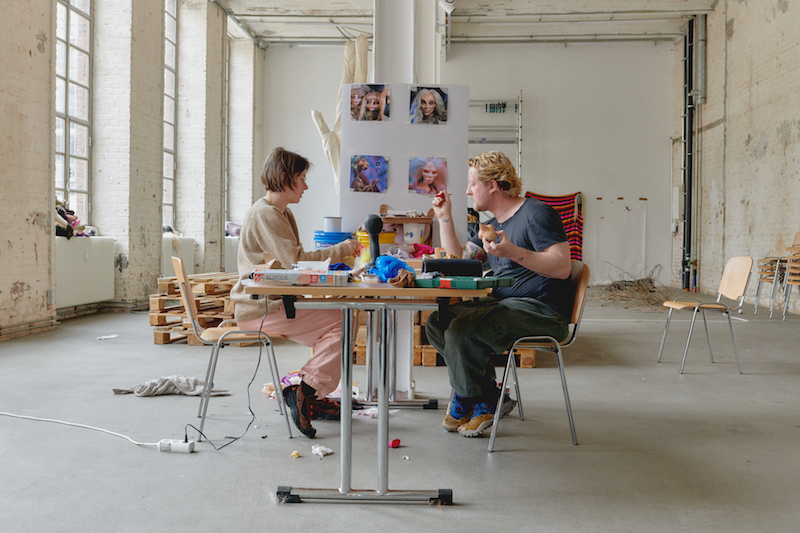
Self is a transdisciplinary artist, although the term seems too precise for someone aptly described as curious, sensitive and radiating with talent. They create albums, performances, operas and handcrafted puppets. They speak Polari, practice tulpamancy and facilitate choirs. Their appetite and enthusiasm is charismatic, and we spend an hour in their sonorous studio at Callie’s chatting about their work, which holds all of the above together.
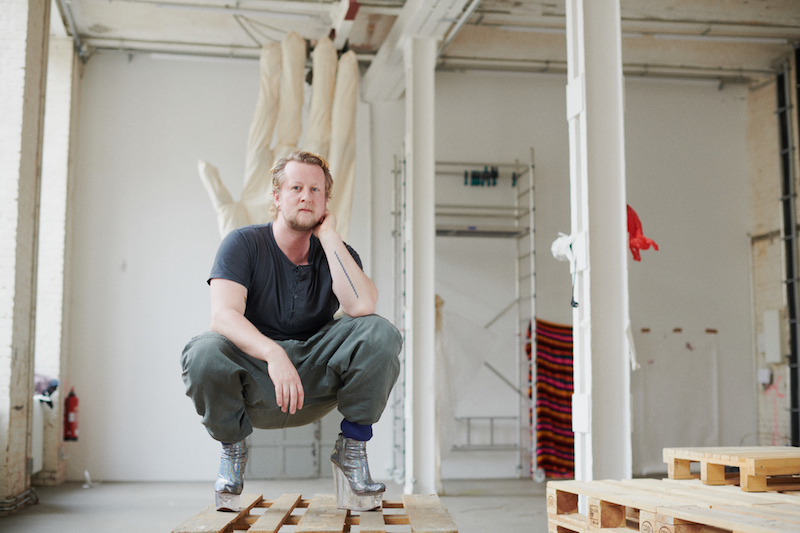
In the studio, Self might be found doing any number of things, like singing with 15 amateurs or drafting the outline for their next operetta. For ‘Prologue X Parable,’ the performance happening this weekend, they have been painting puppets, working on their latest album and rehearsing with collaborators. These rehearsals might be for running lines, songs or movement material, but they are also moments of collaborative thinking through the ideas, politics and practices Self is busy with. Self’s studio practice is best described through rigorous engagement with an immaterial realm, and the sounds and affects and objects that might make that realm relatable are crafted as a byproduct of that engagement. During the studio visit, Self showed me a hand-drawn schematic they made with their friend and fellow artist Bobbi Salvör Menuez. The schematic anchored our conversation, and became the outline of this text.
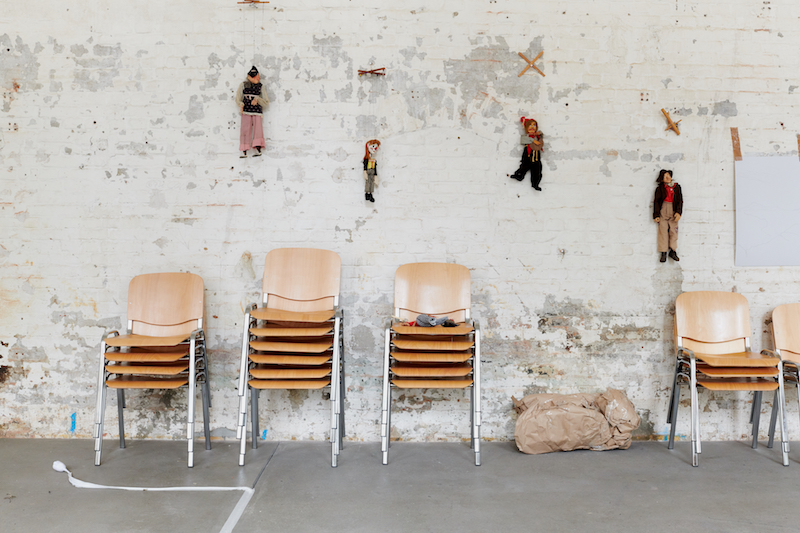
“Do you know the feeling where two things that are seemingly separate are happening, and all of a sudden they come together?” Self asked me, clapping once for emphasis. I thought of quantum physics, as well as the feeling I get when I suspect that the divine is adorned in the cloth of coincidence. That clap could have been the sound of “X,” Self’s persona embodied in the performance, and the title of their upcoming record. Self explained how X was a widely used pre-linguistic symbol, and how it makes them think of the center of the infinity symbol, negation, a kiss, a crossroads, their boyfriend’s first name and the halo of a marionette.
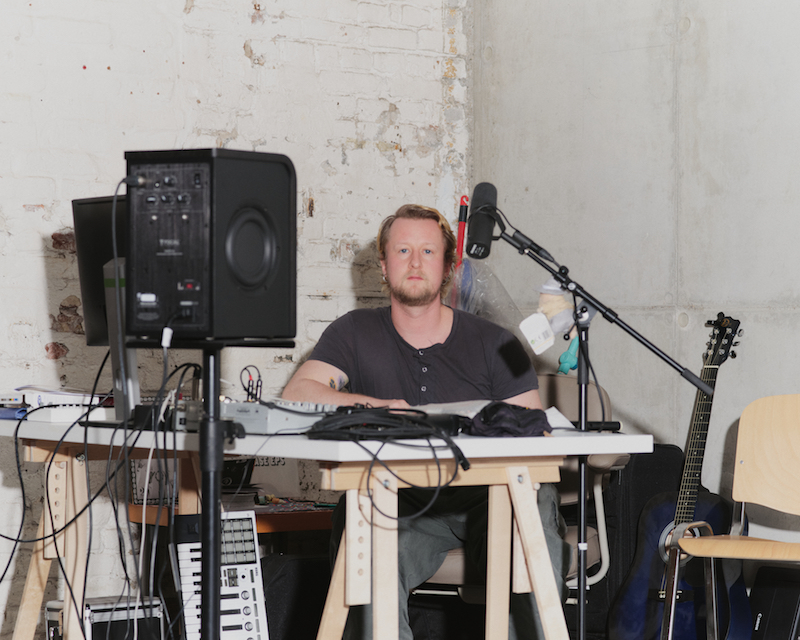
Speaking of things that are one thing when they are apart and something different when together, gloves are a major theme in Self’s current studio practice. One glove symbolizes loss, while two are a portal. One is disembodied, and two is the magician, the conductor, the puppeteer, the engineer, the purveyor of infinity. To walk by one glove on the street is to notice an absence. To enter into two gloves is to touch and tinker. Ever since puppetry came back to Self’s practice in 2021—after they received a scholarship to study puppetry with Ariel Goldberg at Evergreen State College—they have felt that they are performing and making work for deceased friends and queer ghosts. To me, this is the part of Self’s practice that engages circularity. It’s not that one glove is death and two gloves are life. Rather, two gloves enable the living to be in dialogue with everything, including the realms the lone glove indicates.
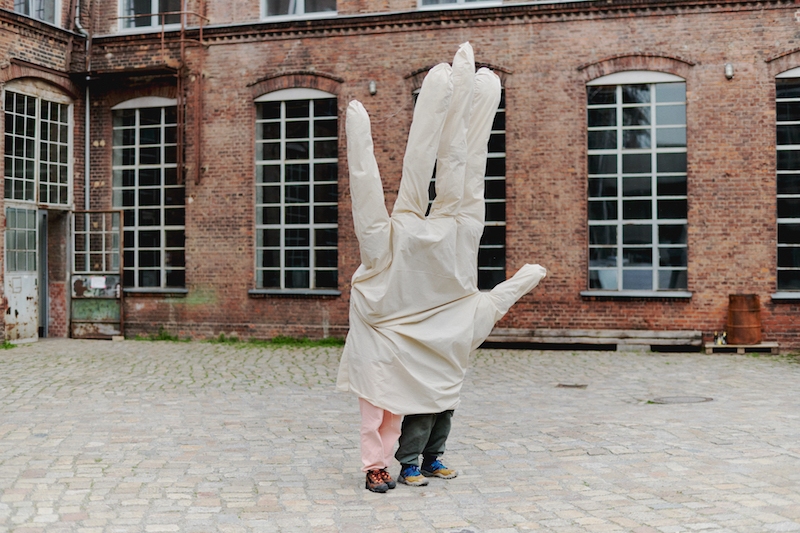
“When you’re doing puppetry, you move the puppet, but you are also moved by it,” Self explained. What’s interesting, notably as a conceptual contribution to dance and performance studies, is that the puppeteer’s movement, and the training and practice it requires, is destined for the shadows. You want the audience to forget there is someone holding the puppet’s halo. While western puppetry hides the puppeteer behind a screen or curtain, Japanese Bunraku places the puppeteer on stage with the figures, camouflaged in black. The best ones are known to become invisible.
Fred Rogers—known as Mr. Rogers, a famous US American puppeteer—said that the displacement of language, from his mouth to the puppet’s, made it easier to express emotions like, “I’m scared. Do you think you could give me a hug?” As he explains his relationship to his puppet, his hand draws a line from his lips to the fuzzy muzzle of Daniel the striped tiger. It’s not about projection or alter egos or fetishization. It’s about a practice of transversal shifting across metaphysical realms. Puppetry and object theater are crafts that bend material reality; anything can become alive. What, then, are the implications for those of us currently living? Self’s practice seems to circle back to this question again and again. They travel shadow worlds. Here are two examples:
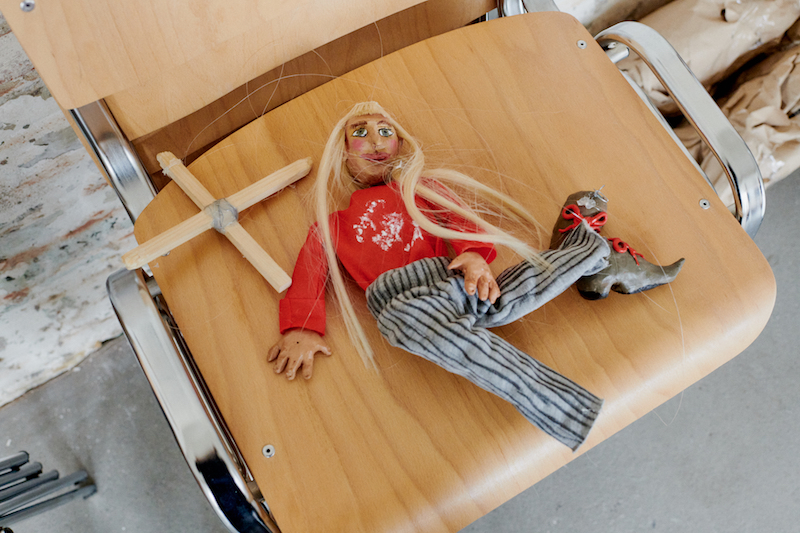
A tulpa is a thought-form that develops a personality, and that you build a relationship with, like an imaginary friend. It can become your confidante. Speaking with your tulpa can be a way of speaking to your shadow. You can problem-solve with your tulpa and hang out with it. It’s a theosophical term that refers to a being created through spiritual and mental powers, and originates in Tibet. Some practitioners of tulpamancy consider tulpas to be sentient and somewhat autonomous. Self practices tulpamancy late at night, conversing and singing in Polari with queer ghosts.
Polari is a cant language: a language that hides another language within itself. “Between the trials of Oscar Wilde and the 1967 Sexual Offenses act” in the UK, Polari was spoken socially by gay men. It allowed them to flirt, negotiate sexual encounters and communicate with each other while evading the police. It’s super camp and almost dead, and Self speaks it. They are in a Polari affinity group and named their recent interdisciplinary opera ‘Tip the Ivy,’ which means “eating ass” in Polari.
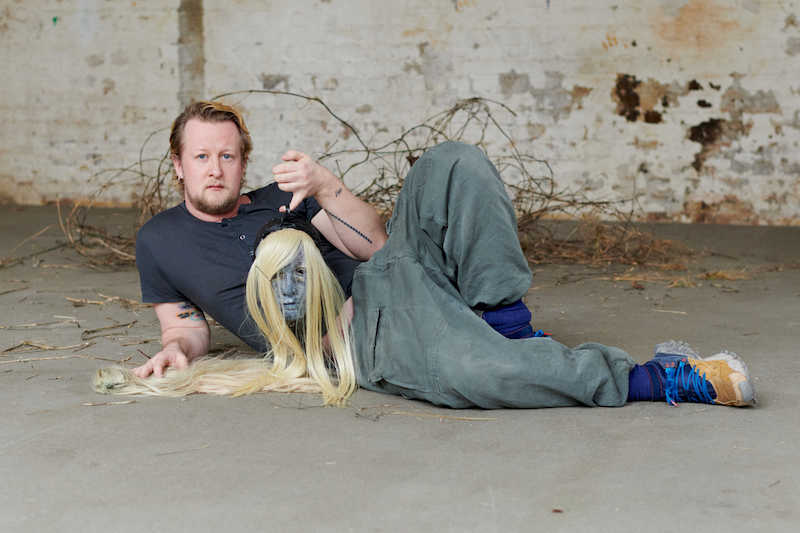
Obfuscation and surviving in the shadows, which Self is learning from and practicing with their tulpas and ghosts, are becoming a political necessity. “Visibility is an incomplete answer,” they said, referencing the current movement to ban transness from public life in the United States, “we might need to learn how to obfuscate again.” Indeed, the puppeteer, or even the hand inside the glove, become apt metaphors for the politics of visibility, not to mention the complexity of X, with all its brevity. X is an encounter that changes us, as well as the journey thereafter.
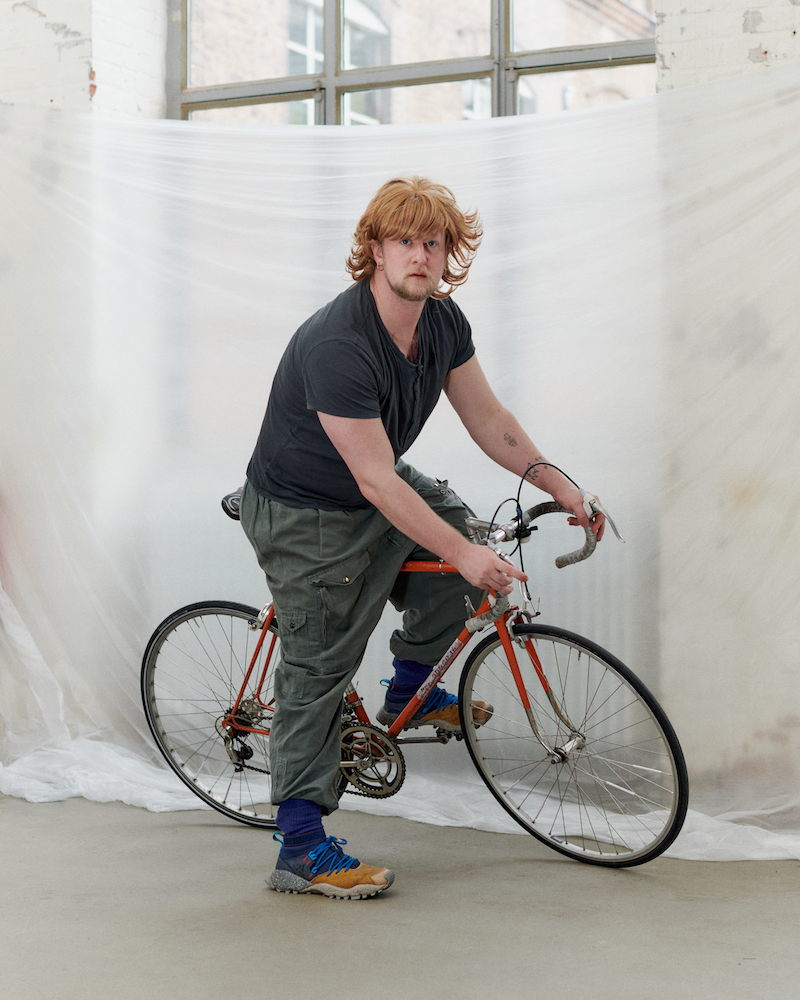
Self’s work with choir, opera, puppets and the expansiveness of their practice brings a smile to my lips. Critics often use the word “joyful” to describe their pieces. It’s important to recognize how much of that joy is undergirded by intimacy with loss. “Two things are always happening,” wrote Self on an Instagram post, which feels a fitting expression for the connection between joy and loss. Two gloves make a portal, but no one said they needed to be the same. A singular glove can’t help but reveal the absence of its sibling. The dramatic dynamics of that relationship allow us to transcend metaphysical barriers, and know that something else is always going on.
Artist Info
Exhibition Info
Callie’s Berlin
Colin Self: ‘The Lemniscatic Elliptic’
Exhibition: Apr. 28-30, 2023; 1-7PM
‘Prologue X Parable’
Performance: Apr. 29; 5 and 7PM
callies.berlin
Lindower Str. 20, 13347 Berlin, click here for map


























